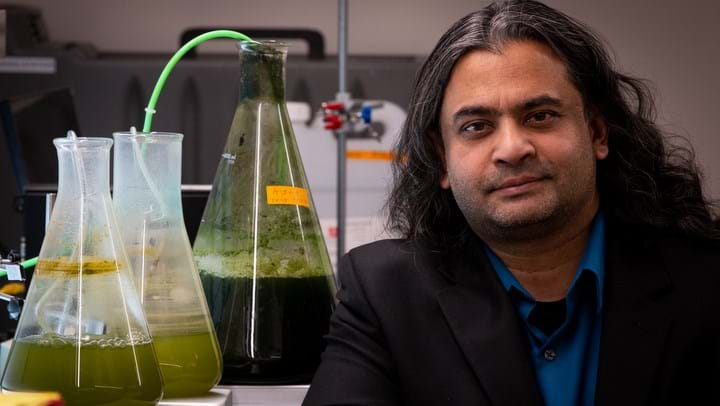New process speeds up the production of biofuel from microorganisms

A PROCESS for converting algae to biofuel has been developed that is significantly less energy-intensive than conventional methods, and has the potential to make algae biofuel economically viable.
Some microorganisms, such as algae, contain lipids which can be converted into biofuel. Producing biofuel from algae has an advantage over biofuels that use crops as a feedstock, as algae does not require a significant area of land and can also be grown on non-arable land and with saline water. The conventional method for producing biofuel from algae requires removing the water from the algae, which is an extremely energy-intensive process. This leaves a slurry or dry powder of biomass which then needs to be mixed with a solvent to separate the lipids from the biomass. A new process developed by researchers at the University of Utah does not require any dewatering or drying, thus removing the most energy-intensive step.
"We have removed a significant development barrier to make algal biofuel production more efficient and smarter,” said Leonard Pease, a co-author on the study. “Our method puts us much closer to creating biofuels energy parity than we were before."
The team used a confined impinging jet mixer (CIJM) which shoots jets of an algae suspension at jets of an organic solvent. This creates localised turbulence which breaks up the cells and increases the mass transfer rate of the lipids from the algae to the solvent. The jets also shorten the distance over which the mass transfer occurs, and the lipid extraction is completed in around 10 ms. The solvent can be separated and then recycled to be used in the process again.
"There have been many laudable research efforts to advance algal biofuel, but nothing has yet produced a price point capable of attracting commercial development. Our designs may change that equation and put algal biofuel back in play," said Swomitra Mohanty, Chemical Engineering Assistant Professor at Utah.
“This is game-changing,” said Pease. “The breakthrough technologies we are creating could drive a revolution in algae and other cell-derived biofuels development. The dream may soon be within reach.”
Chemical Engineering Science: X http://doi.org/c4c2
Recent Editions
Catch up on the latest news, views and jobs from The Chemical Engineer. Below are the four latest issues. View a wider selection of the archive from within the Magazine section of this site.




